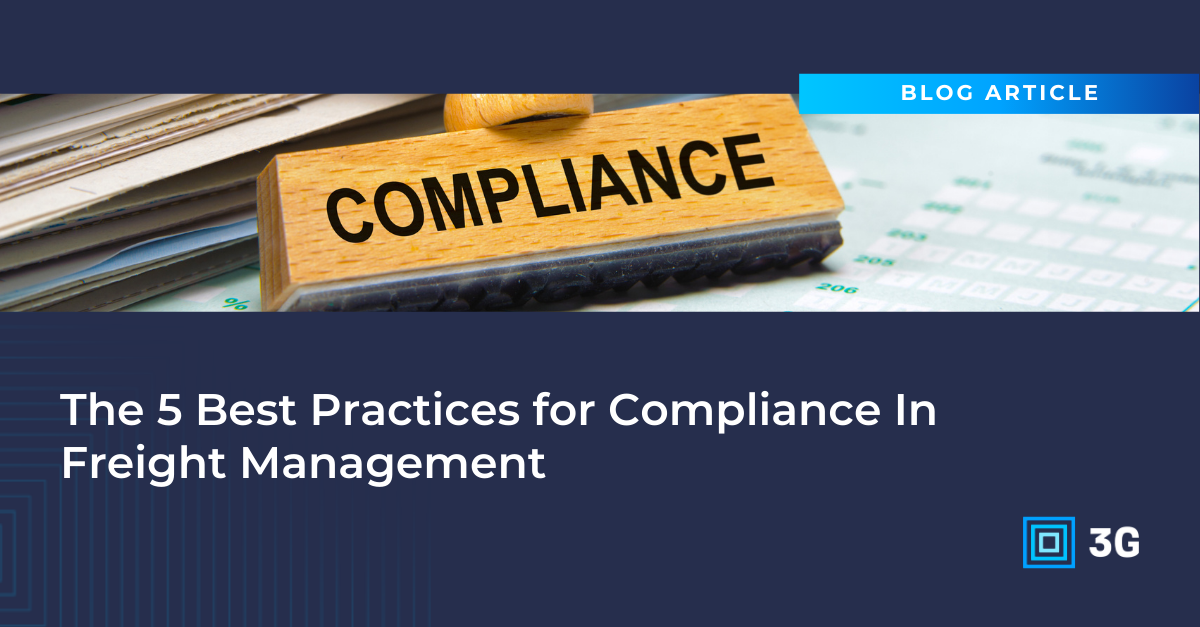Recently, Pitney Bowes published their U.S. parcel shipping index, estimating that shipping volumes are expected to grow 5% per year until 2028. Shippers that can meet this demand will continue to enjoy an incredible market opportunity — but only if they can keep costs under control and ensure compliance. Adopting the right best practices — with help from modern compliance software — will help ensure a smoother journey into the next phase of your business.
The Shipping Compliance Standards That Matter
For shippers, compliance isn’t just limited to regulatory demands; it encompasses trading partners, federal authorities, and more. To truly participate in today’s market, shippers need to meet:
Retailer Compliance Standards
Whenever shippers enter partnerships with retailers, they must agree to specific standards and protocols in order to conduct business. Major retailers like Target or Walmart set strict guidelines for their vendors that typically govern elements like packaging and labeling requirements, delivery schedules, and documentation formatting. Failure to comply with retailer standards can not only result in penalties, but also threaten an incredibly lucrative and critical relationship for the survival and growth of your business.
Retail partners can also reject non-compliant shipments, increasing shipping charges from returned goods and wasting valuable time. TrakMotive, for example, saved nearly $19,000 in retailer fees annually by reducing manual entry errors after embracing 3G Pacejet Shipping’s automation solution.
Customs Compliance Standards
Shippers that work with international suppliers and ship products internationally must comply with stringent standards from U.S. and international customs authorities. Each of these authorities will have different requirements and processes for classifying goods, properly labeling packages, and paying the appropriate duties or taxes. Shippers must be rigorous about customs compliance to avoid delays, fines, and legal issues and keep their international relations profitable.
Hazmat Compliance Standards
FMCSA regulations govern transportation, handling, and storage of hazardous materials to protect public health during over-the-road (OTR) transit. Any shippers dealing with goods that fall under this jurisdiction need to meet hazardous materials compliance standards. This includes classifying, packaging, labeling, and documenting the products, as well as training personnel on proper handling. Hazmat has the highest risk of any of these categories, and compliance is critical for avoiding serious legal penalties.
5 Best Practices for Better Shipping Compliance
Balancing compliance requirements from so many parties can require significant resources from your team — especially as your company grows to fill market demand. Implementing these best practices can help avoid issues while streamlining compliance:
- Invest in Continuous Training
- Hold regular training sessions for all employees to keep them informed of the latest shipping regulations and compliance requirements, including those for retail partners or the handling of hazardous materials. By keeping everyone on the same page regarding shipping compliance, you help reduce the risk of violations while enhancing operational efficiency. Proactive training means compliance efforts require less time and energy while maintaining high standards.
- Keep Rigorous Documentation
- Maintaining meticulous records for each shipment—whether hazardous, retail, or international—is crucial for verifying that the correct paperwork and procedures are followed. Detailed documentation of shipping processes helps ensure that each shipment complies with regulations, reducing the risk of costly errors and potential violations.
- Stay Updated on Regulations
- Subscribe to industry news sources to keep your team informed about upcoming changes in the regulatory landscape. This puts you in the position to preemptively adjust compliance practices over time to avoid major and disruptive changes when a new law goes into effect. This has the double benefit of both reducing risks of compliance violations and fostering a culture of continuous improvement that makes it easy to maximize efficiency.
- Regularly Audit Compliance Adherence
- Perform internal audits on a regular basis to verify that all compliance processes align with current regulatory and retailer standards. This gives your team an opportunity to identify and rectify any gaps before regulators issue violations or fines. What’s more, conducting these audits prepares your company for external inspections, improving employee confidence with regulators and reducing the risk of surprises and non-compliance issues.
- Improve Compliance With Software
- Shipping software can transform compliance by automating the complex paperwork required for various shipping scenarios. By handling compliance documentation, the software reduces the chances for human error, helping to prevent costly fines, rejected shipments, and violations. Automated processes not only improve record accuracy but also ensure that all compliance requirements are met seamlessly, allowing shipments to stay on track for timely delivery. And because software stores this data centrally, it makes it easy to audit operations whenever necessary. 3G’s self-service paperwork feature, for instance, allows users to create rules tailored to their specific situation and individual partners.
Streamline Compliance With 3G
When it comes to digital transformation, it’s important to look at your entire operation instead of just your compliance needs. An end-to-end transportation software platform will provide benefits like route planning automation, load optimization, and more — while automatically improving compliance documentation.
3G streamlines every aspect of OTR shipping to dramatically reduce costs throughout your operation, including from the time it takes to meet regulatory requirements. Want to experience the difference between our platform and other solutions in the market? Schedule a demo today.








